When I bought my dream property, 75 acres of woods with two small ponds and a tiny field in east Spalding County, I wanted to manage it for wildlife and timber. The Georgia Forestry Commission worked with me to set up a conservation plan that I have tried to follow.
On the two small ponds I erected wood duck nest and put floating goose nests in the water. I loved watching a pair of geese use the nest, protect it from other geese and lay their eggs. It was a pretty sight to see the geese with their young paddling around until the young ones could leave.
Going to the ponds early in the morning or late in the afternoon I could hear the whistle of wood ducks as they flew in or out. One spring I saw a hen with about a dozen ducklings following her around on a pond and one fall a small flock of hooded mergansers took up residence and they were very pretty, too. Although I have never fired a shot at a duck, I enjoy them on my ponds and try to give them a good place to live and nest.
Conserving my land and water is multiplied millions of times all over North America by Ducks, Unlimited. This conservation group works tirelessly to conserve wetlands and increase wildlife and bird habitat. And many individual members, like me, work to do a small part in addition to the big projects the organization does.
The Ducks, Unlimited motto “Filling the skies with waterfowl today, tomorrow and forever” has been its purpose since its founding in 1937. Started by a small group of hunters, Ducks, Unlimited has grown to about 650,000 members in the US, 120,000 in Canada and 5000 in Mexico.
As of January 1, 2020, Ducks, Unlimited has conserved more than six million acres in the US, more than six million acres in Canada and two million in Mexico. Total acreage in North America is almost 15 million acres.
In addition, there is about 175 million acres that have been conserved through legislation and agreements that Ducks, Unlimited has had an influence on being enacted through working with governments and individuals. That is a tremendous amount of land to be brought under conservation to protect the future of waterfowl and wildlife.
Much of the efforts of Ducks, Unlimited is in Canada and the northern Midwest where they either buy land and protect it or work with state wildlife departments and individuals to conserve wetlands where ducks nest and raise their young.
But Ducks, Unlimited works in every state in the
US, including here in Georgia. And the projects do not just help ducks. Every kind of wildlife and birds use the land and are able to increase their numbers.
Here in our state, more than 27,000 acres have been conserved. Georgia is important because we are part of the Atlantic Flyway and waterfowl that nest in the prairies, Great Lakes and eastern Canada winter here.
Our coastal marshes and wetlands are important habitat for diving ducks like lesser scaup and paddle ducks like green wing teal and wigeon. Inland, wetlands and beaver ponds on major rivers host thousands of mallards and wood ducks. Lakes host ring-neck ducks, canvasbacks and wood ducks. Private ponds and wetlands like mine help those species, too.
From the Rhett’s Island Unit on the Altamaha Wildlife Management Area on the coast to the Blanton
Creek Wildlife Management Area near us, projects all over our state offer hunting, public recreation like birding and hiking, water quality improvement and natural habitat improvement.
Most of the work in Georgia consists of water control structures, like small dams to increase the amount of water in an area to dikes with pumps where fields can be drained, planted with food crops then flooded when they are mature to provide food for waterfowl.
Many of the projects done by Ducks, Unlimited are in conjunction with state agencies like the Georgia Department of Natural Resources and private companies like Georgia Power. Ducks, Unlimited members volunteer to do manual labor to help with these projects, too.
Many organizations spent a high percentage of the money they raise for “administration,” with only a small amount going to the efforts for which it was raised. Ducks, Unlimited dedicates 82 percent of their raised money to projects and only four percent to administration. About 14 percent goes to fundraising.
Membership fees and donations, and donations from businesses, are a big part of their income, but much of the money comes from local events. Banquets held all over Georgia offer a good meal, good fellowship and a chance to bid on items offered for auction. These events are a lot of fun and provide a large part of Ducks, Unlimited income.
Locally, the Pike County Chapter event was honored with President’s Roll of Honor award for the amount of money raised. You can go to https://www.ducks.org/georgia/events to see the many events scheduled around Georgia during November and early December. Many more will be held next year. For a fun night out, plan to attend one.
Help this great organization by joining – right now you get a nice sweatshirt type fleece jacket just for paying membership dues. And if you have land, manage it for waterfowl and wildlife. Help out Ducks, Unlimited, the Georgia Department of Wildlife, businesses and other individuals by doing your part for the future of our natural environment.
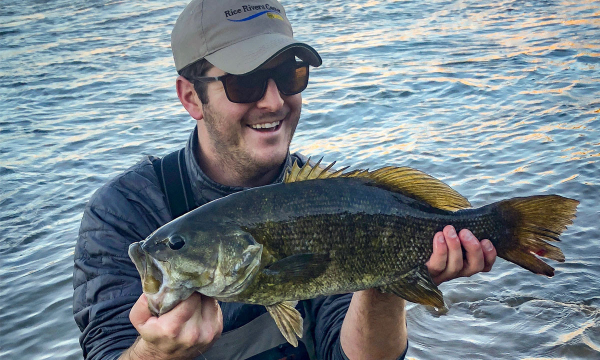 The author with a trophy smallmouth bass from the James River in downtown Richmond. Fall is one of the best times of the year to target big smallmouth bass across the state.
The author with a trophy smallmouth bass from the James River in downtown Richmond. Fall is one of the best times of the year to target big smallmouth bass across the state.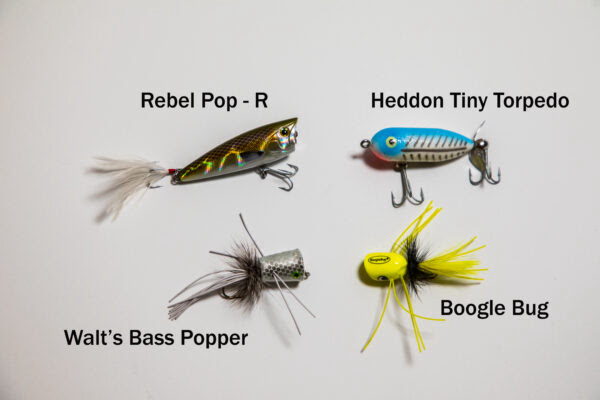 September and October are great months to fish topwater lures and flies for Virginia smallmouth bass. Photo by Meghan Marchetti/DGIF.
September and October are great months to fish topwater lures and flies for Virginia smallmouth bass. Photo by Meghan Marchetti/DGIF.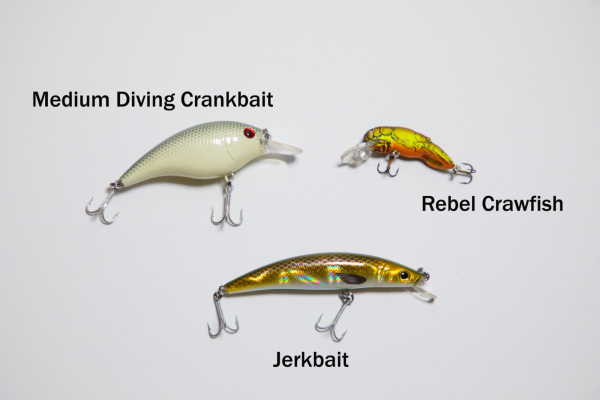 Subsurface lures work well when targeting fall smallmouth. Photo by Meghan Marchetti/DGIF.
Subsurface lures work well when targeting fall smallmouth. Photo by Meghan Marchetti/DGIF. Fishing large streamers is a great technique for targeting big smallmouth bass. Consider fishing a sinktip or full sinking line in mid to late fall on our larger Virginia rivers, especially in higher flows. Photo by Meghan Marchetti/DGIF.
Fishing large streamers is a great technique for targeting big smallmouth bass. Consider fishing a sinktip or full sinking line in mid to late fall on our larger Virginia rivers, especially in higher flows. Photo by Meghan Marchetti/DGIF. Long known for high-quality, on-water eyewear,
Long known for high-quality, on-water eyewear,  The models with glass lenses are somewhat heavier than some other brands just because Costa builds their stuff to last, but they’re not so heavy that you notice the weight on your nose or ears. The hinges, for example, are not only stout stainless steel, but they’re inset inside the durable composite frame. This not only protects them from salt spray and the resulting corrosion but adds reinforcement at the point where most glasses eventually fail.
The models with glass lenses are somewhat heavier than some other brands just because Costa builds their stuff to last, but they’re not so heavy that you notice the weight on your nose or ears. The hinges, for example, are not only stout stainless steel, but they’re inset inside the durable composite frame. This not only protects them from salt spray and the resulting corrosion but adds reinforcement at the point where most glasses eventually fail.  I like that the ear pieces are curved to grip the contours of the head, but have relatively little drop behind the ears. To me, this design stays on well and is easier to take on and off than those with a pronounced drop in the ear pieces. (I always put CablZ eye glass retainers on my sunglasses before wearing them the first time—saves losing them overboard, plus I always know where they are when they’re not on my head.)
I like that the ear pieces are curved to grip the contours of the head, but have relatively little drop behind the ears. To me, this design stays on well and is easier to take on and off than those with a pronounced drop in the ear pieces. (I always put CablZ eye glass retainers on my sunglasses before wearing them the first time—saves losing them overboard, plus I always know where they are when they’re not on my head.)  Colorado River cutthroat trout like this one didn’t take long to use a fishway on Poose Creek in Colorado.
Colorado River cutthroat trout like this one didn’t take long to use a fishway on Poose Creek in Colorado. 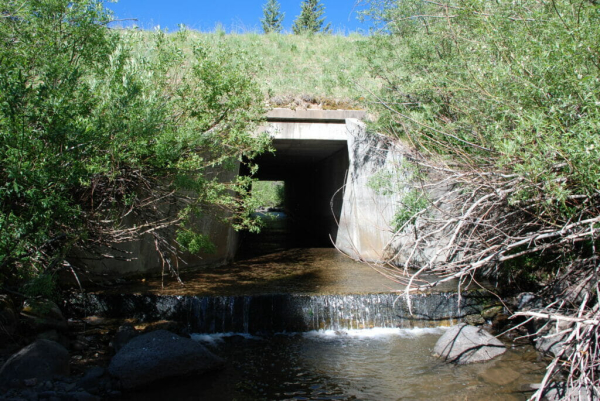
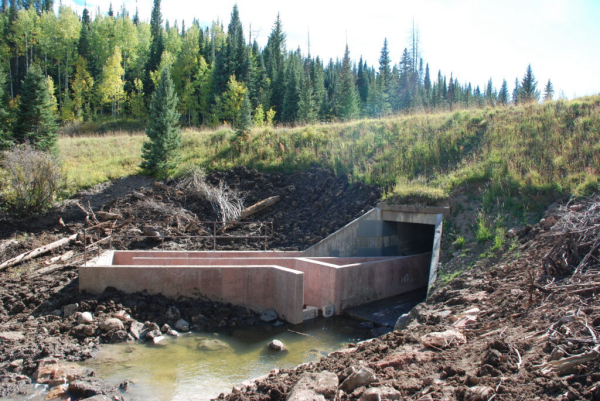 The exiting culvert was retrofitted with a vertical slot fishway in 2014. Brian Hodge photo.
The exiting culvert was retrofitted with a vertical slot fishway in 2014. Brian Hodge photo. Slotted baffles in the 150-foot long fishway allow fish to swim up the ladder. Brian Hodge photo.
Slotted baffles in the 150-foot long fishway allow fish to swim up the ladder. Brian Hodge photo.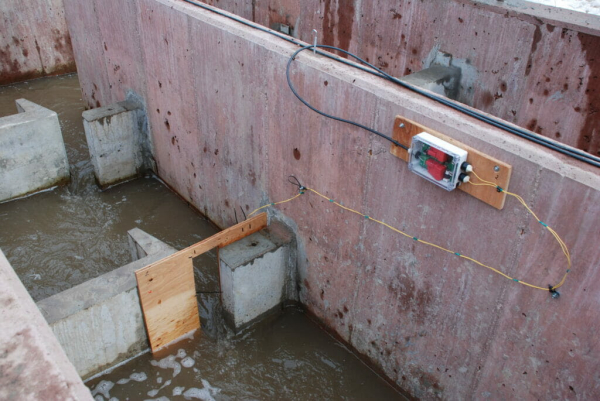 One of four stationary antennas installed in and around the fishway. Brian Hodge/Trout Unlimited
One of four stationary antennas installed in and around the fishway. Brian Hodge/Trout Unlimited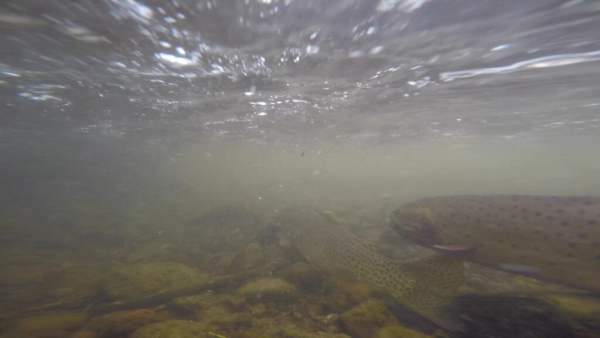 Colorado River cutthroat trout make their way to spawning grounds. Brian Hodge/Trout Unlimited
Colorado River cutthroat trout make their way to spawning grounds. Brian Hodge/Trout Unlimited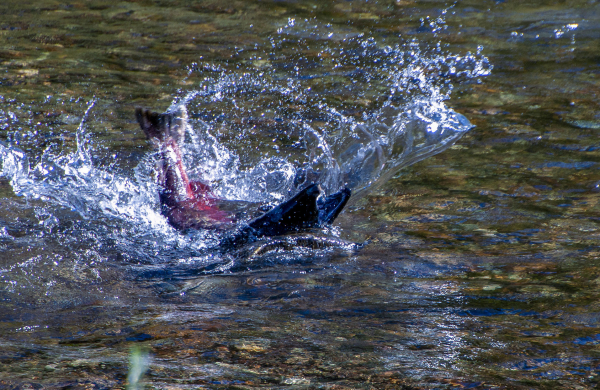 A male Chinook salmon, with red coloration, strikes another male Chinook on Clear Creek in Redding, California, during spawning season in October. Credit: Brandon Honig/USFWS By Brandon Honig, USF&W
A male Chinook salmon, with red coloration, strikes another male Chinook on Clear Creek in Redding, California, during spawning season in October. Credit: Brandon Honig/USFWS By Brandon Honig, USF&W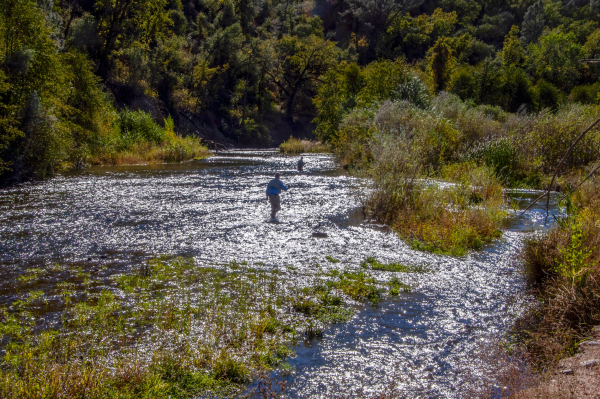 Local fishermen search for steelhead in Clear Creek, where restoration has created diverse conditions and habitats for fish. Credit: Brandon Honig/USFWS
Local fishermen search for steelhead in Clear Creek, where restoration has created diverse conditions and habitats for fish. Credit: Brandon Honig/USFWS Workers plug a ditch dug by gravel-miners last century and redirect its water into a new channel on Clear Creek’s original path. Credit: Brandon Honig/USFWS
Workers plug a ditch dug by gravel-miners last century and redirect its water into a new channel on Clear Creek’s original path. Credit: Brandon Honig/USFWS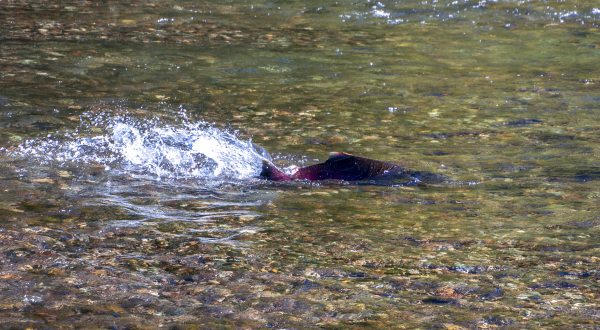 A Chinook salmon swims in Clear Creek during spawning season in October. Restoration work that began in the 1990s has turned Clear Creek into a salmon-producing hotspot. Credit: Brandon Honig/USFWS
A Chinook salmon swims in Clear Creek during spawning season in October. Restoration work that began in the 1990s has turned Clear Creek into a salmon-producing hotspot. Credit: Brandon Honig/USFWS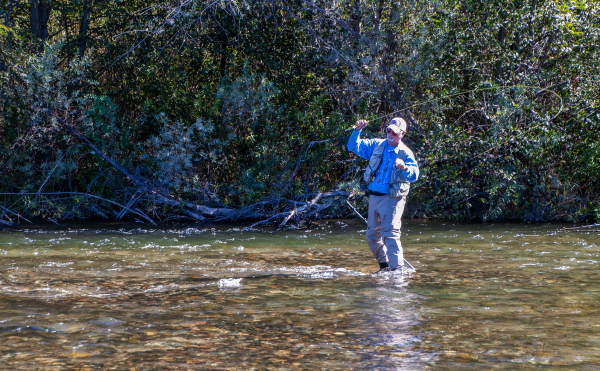 Creighton Smith of Redding tries to pull a steelhead out of Clear Creek in October. Wild steelhead must be released unharmed when caught in California. Credit: Brandon Honig/USFWS
Creighton Smith of Redding tries to pull a steelhead out of Clear Creek in October. Wild steelhead must be released unharmed when caught in California. Credit: Brandon Honig/USFWS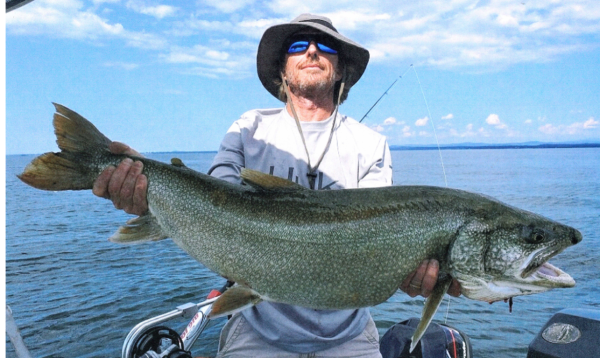 By John Hall, Vermont Fish & Wildlife Department
By John Hall, Vermont Fish & Wildlife Department